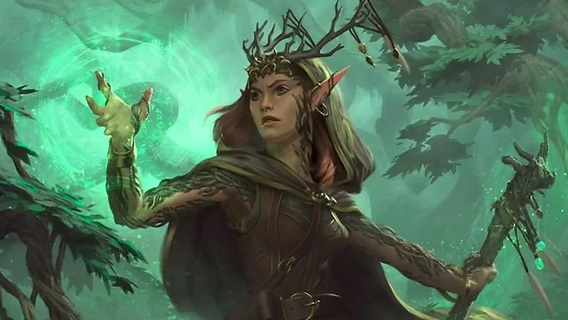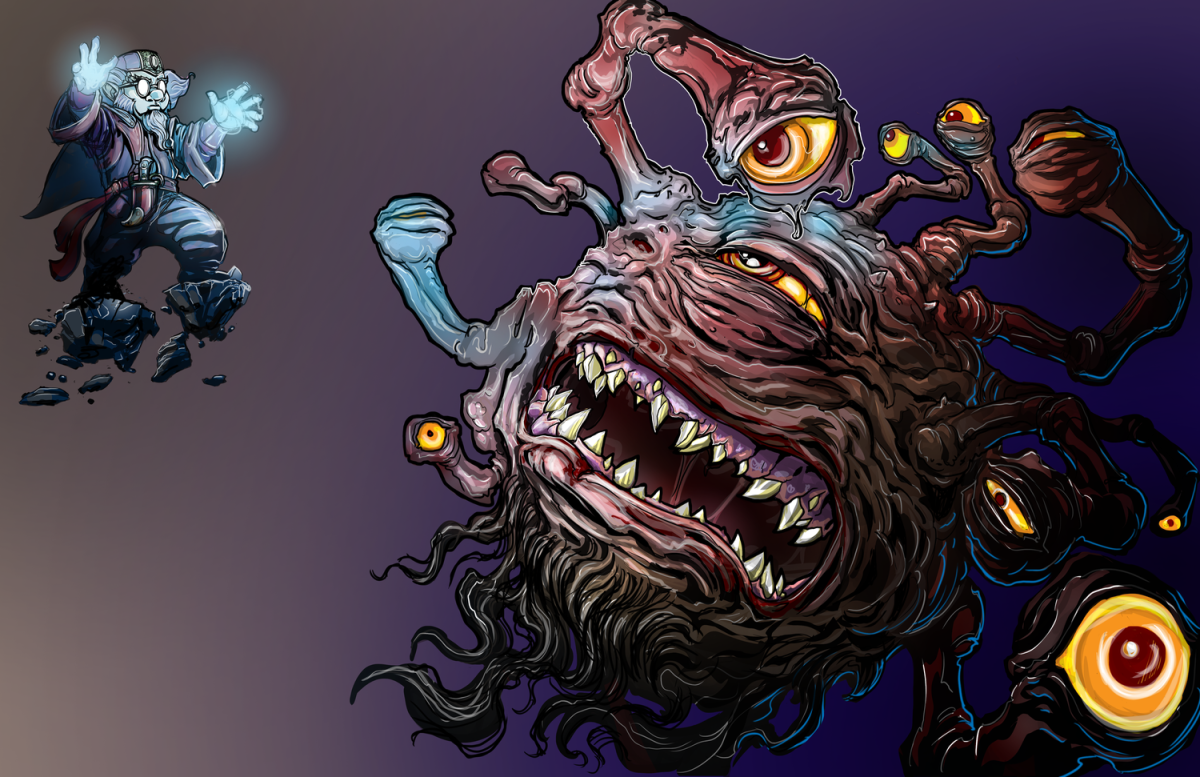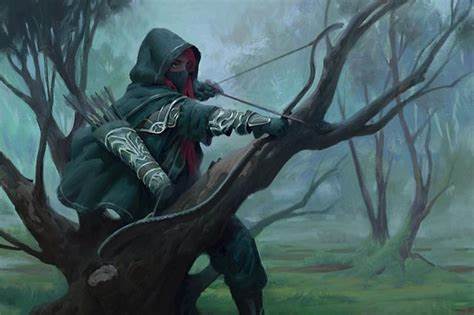The Druid in Dungeons & Dragons 5th Edition (D&D 5E) is a versatile and powerful spellcasting class that embodies the natural world. Drawing power from the earth, sky, and living things around them, Druids can shapeshift into animals, heal, control elements, and wield powerful spells. If you’re intrigued by the wild, appreciate a balanced connection with nature, or simply love the idea of transforming into beasts, the Druid class is an exciting choice. This guide will help you create and play a Druid in D&D 5E.
What is a Druid in D&D 5E?
Druids are full casters who have access to nature-based magic and a unique ability known as Wild Shape, which allows them to transform into various animals. Their spells often focus on healing, controlling the battlefield, and protecting the natural order. Druids are flexible in both combat and role-playing, letting you embody nature’s power while adapting to various roles in a party.
Step-by-Step Guide to Creating a Druid
1. Choose Your Druid Circle (Subclass)
At 2nd level, Druids choose a subclass called a Druid Circle that defines their specific connection to nature and enhances their abilities in unique ways. Here’s a breakdown of the main Druid Circles available:
- Circle of the Land: The “classic” spellcasting Druid, Circle of the Land Druids gain extra spells based on their chosen terrain (forest, mountain, coast, etc.) and recover spells more efficiently. They’re excellent for players who want to maximize spellcasting capabilities and have access to a broad range of spells.
- Circle of the Moon: Specializes in Wild Shape, allowing you to transform into stronger beasts and use your shapeshifting abilities as a main combat feature. This subclass is perfect for players who want to fight on the front lines, using Wild Shape to deal significant melee damage and absorb hits.
- Circle of Dreams (Xanathar’s Guide): These Druids are connected to the Feywild, giving them powers to heal and protect their allies. Dream Druids are excellent at support, with abilities that allow them to restore health, teleport allies, and add resilience to their party.
- Circle of the Shepherd (Xanathar’s Guide): Focuses on summoning and boosting animal companions and spirit creatures. Shepherd Druids excel at providing support to allies and summoning creatures to assist in combat.
- Circle of Spores (Guildmaster’s Guide to Ravnica): These Druids draw on the power of fungi and decay, adding necrotic damage to their attacks and summoning fungal undead. Great for players who like the dark and mysterious aspects of nature, focusing on offensive and debuff-based play.
- Circle of Wildfire (Tasha’s Cauldron of Everything): Focuses on destruction and rebirth, granting abilities to summon a Wildfire Spirit that can deal fire damage and enhance healing. Wildfire Druids have excellent versatility, combining offense, healing, and support.
Each Circle has a distinct feel, so choose one that fits the kind of Druid you want to play and the role you envision in your party.
2. Choose Your Race
When creating a Druid, consider races that offer bonuses to Wisdom, the Druid’s primary ability score, as it powers your spellcasting and some class abilities. Great choices include:
- Wood Elf: Provides a bonus to Wisdom and Dexterity, improved movement speed, and access to Mask of the Wildfor stealth in nature.
- Firbolg: With a Wisdom bonus and nature-themed abilities like Hidden Step, Firbolgs are practically designed for Druids.
- Human (Variant): Access to a feat at 1st level can enhance your versatility. Feats like Observant (for Wisdom bonus) or Magic Initiate (to add spells) can complement a Druid’s abilities.
Other races that offer bonuses to Constitution or Dexterity, like Hill Dwarves or Halflings, are also good choices, as they enhance your survivability and support roles.
3. Ability Scores and Skills
Your primary ability score should be Wisdom, as it powers your spells and spell save DC. Constitution is your second priority for additional hit points and maintaining concentration on spells. Dexterity is helpful for armor class (AC) and initiative.
A typical ability score priority for a Druid might look like this:
- Wisdom (spellcasting and core abilities)
- Constitution (for hit points and concentration checks)
- Dexterity (defense and initiative)
For skills, consider choosing Perception (highly useful for spotting threats), Nature (natural knowledge), and Animal Handling if you want to enhance your role-playing as a guardian of the wild. Medicine is also valuable for Druids who want to focus on healing.
4. Wild Shape and Spellcasting
Druids are powerful spellcasters with a unique ability: Wild Shape. Wild Shape allows you to transform into animals you’ve encountered, giving you versatility in combat, exploration, and role-play.
- Wild Shape: At level 2, you can transform into animals with a limited Challenge Rating (CR), determined by your Druid level. Circle of the Moon Druids excel at combat with stronger forms, while other Druids might use it for stealth (turning into a small creature to scout) or utility (like transforming into a bird to travel).
- Spellcasting: Druids have a wide array of spells that cover healing, damage, control, and utility. You can change your spell list each long rest, allowing you to tailor your spells to the adventure ahead. Key spells for Druids include:
- Cantrips: Produce Flame (ranged attack option), Guidance (buff an ally’s ability checks), and Thorn Whip(control).
- 1st Level: Goodberry (healing and rationing), Entangle (control), and Healing Word (ranged healing).
- 2nd Level: Spike Growth (area control), Pass Without Trace (stealth boost for the party), Moonbeam (damage over time).
- 3rd Level: Call Lightning (area damage), Plant Growth (battlefield control or role-play), Revivify (revival).
- 4th Level and Higher: Polymorph (versatility), Wall of Fire (damage and control), Wall of Stone, and Heal.
Druids can adapt their spell selection to meet the needs of each adventure, making them a highly flexible class. Spells like Goodberry, Healing Word, and Cure Wounds make you a competent healer, while area control spells like Entangle and Spike Growth give you excellent battlefield control.
Playing a Druid: Role-Playing and Combat
1. Role-Playing Your Druid
When role-playing your Druid, think about how they interact with nature. Do they revere it, or see themselves as guardians of balance? Consider where your character draws the line when it comes to civilization and wilderness—are they comfortable in cities, or do they prefer the solitude of the wild?
Your Circle choice also influences your personality and actions:
- Circle of the Land Druids might be wise sages, protectors of ancient knowledge, or even nomadic guardians of specific biomes.
- Circle of the Moon Druids likely embody the wild, perhaps with a more primal, instinctive personality.
- Circle of Spores Druids may be interested in decay, fungi, and the circle of life, which can add a mysterious or even eerie vibe.
2. Combat Strategy
Druids can adapt to almost any role in combat, depending on their spell choices and Circle abilities:
- Damage Dealer: With spells like Call Lightning, Moonbeam, and Flame Blade, Druids can deal significant damage from a distance. Circle of the Moon Druids can even use Wild Shape to turn into powerful beasts, dealing melee damage and absorbing hits.
- Healer/Support: Spells like Healing Word, Goodberry, and Regenerate make Druids reliable healers. Circle of Dreams Druids excel in this role, with additional healing abilities that enhance their allies’ resilience.
- Controller: Druids have a range of battlefield control spells, like Entangle, Spike Growth, and Wall of Stone. With these spells, they can restrict enemy movement, force positioning, and create hazards.
- Tank: Circle of the Moon Druids are particularly effective at “tanking” by using Wild Shape to transform into high-HP beasts, protecting their allies and drawing enemy attacks.
Wild Shape can also be used tactically in combat. For example, transforming into a small creature like a spider can allow you to escape tricky situations, while shifting into a wolf or bear can let you charge into battle. Be mindful of the creature’s stats—use Wild Shape to complement your combat style.
3. Adapt to Changing Environments
Druids can prepare new spells after each long rest, giving you the flexibility to adjust to new environments. If you’re adventuring in the desert, prepare spells that help with heat or dehydration, while in a forest, prepare spells that work with plant life. This adaptability is what makes Druids invaluable, as they can always prepare the right tools for the job.
Conclusion
Druids are one of D&D 5E’s most versatile and flavorful classes, allowing you to embody the power of nature while contributing significantly to any adventuring party. Whether you’re casting potent spells, healing allies, or transforming into mighty beasts, Druids offer a truly unique way to experience the game.
Embrace your connection to the natural world, adapt to the journey, and become a force of nature!












